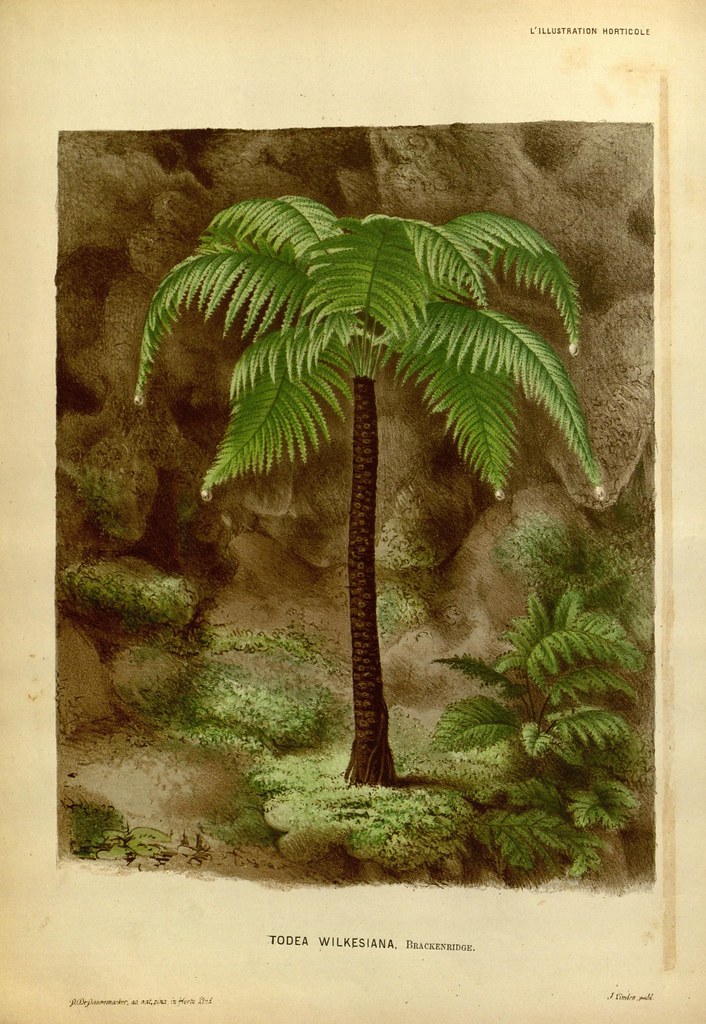#Charles LeMaire
Text

Marilyn Monroe in a dress by Charles LeMaire, photographed by John Engstead, Photoplay, Sept. 1950
195 notes
·
View notes
Text


“sugar” & “salt” designed by charles lemaire for diamond horseshoe (1944).
59 notes
·
View notes
Text
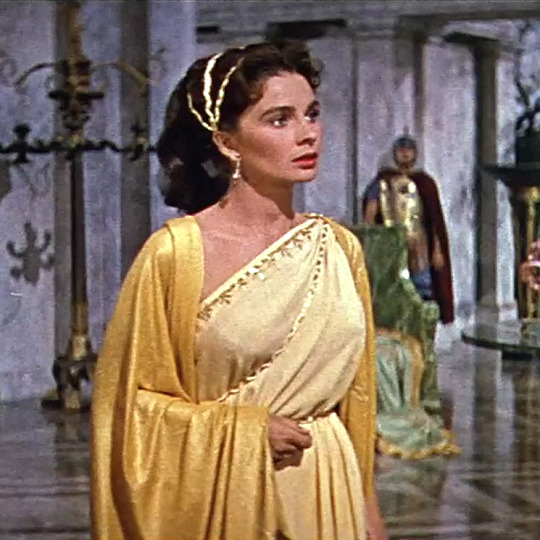

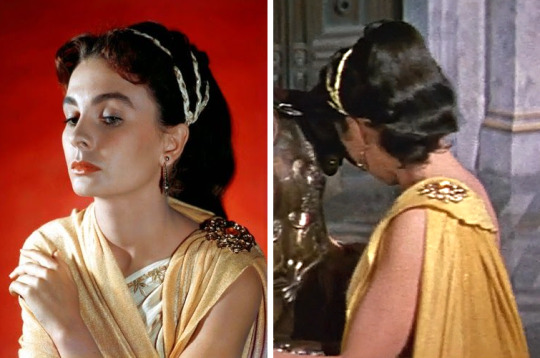


One Dress a Day Challenge
November: Oscar winners
The Robe / Jean Simmons as Diana
Year: 1953
Designers: Charles LeMaire and Emile Santiago
I'm impressed that they managed to avoid the "bullet bra" silhouette, which was all the rage at the time. I also like the edging on the soft yellow dress; it creates a pleasing effect when the draped layers overlap.
My family used to jokingly refer to this movie as The Robe that Ate Richard Burton. It seemed a bit overwrought on our small TV. It must have been quite a spectacle on the big screen, though.
#the robe#oscar winners#jean simmons#one dress a day challenge#one dress a week challenge#movie costumes#period film#1953 movies#1953 films#roman fashion#roman style#roman costumes#ancient roman costumes#ancient world costumes#off the shoulder#yellow dresses#yellow dress#the robe 1953#emile santiago#charles lemaire
105 notes
·
View notes
Text

The Robe (1953)
Henry Koster’s The Robe, distributed by 20th Century Fox, appeared near the beginning of an era where religious epics and sword-and-sandal films became massive box office draws worldwide. Cecil B. DeMille’s Samson and Delilah (1949) and Mervyn LeRoy’s Quo Vadis (1951) had already laid the foundation on which Koster’s film, adapting Lloyd C. Douglas’ novel of the same name, would find its success. Despite The Robe being highly influential in Hollywood and becoming the highest-grossing film of 1953, the likes of DeMille’s The Ten Commandments (1956) and William Wyler’s Ben-Hur (1959) overtook it artistically and financially – no shame there, as those are two far superior films.
So what is The Robe’s claim to movie history beyond its initial theatrical earnings? When The Robe first came to theaters, 20th Century Fox advertised it as the first film ever made in CinemaScope. Created by Fox’s president, Spyros P. Skouras, CinemaScope was a format in which a widescreen camera lens contracted its widescreen shots onto regular 35mm film and, during theatrical projection, another lens would de-contract the image from the 35mm film in order to project a widescreen format. Theaters would only need to make minor, inexpensive modifications to their projectors in order to show a film in true CinemaScope, a 2:55:1 widescreen aspect ratio. Almost all other films were shot in the Academy ratio at the time (1.37:1, close to the 4:3 ratio – think: black bars on the left- and right-hand sides of a widescreen monitor – seen on many older standard computer monitors and televisions). With increasing competition from television, Fox executives believed CinemaScope could be a way to lure audiences back into theaters. Despite this overreaction from Fox’s executives (as well as the other major Hollywood studios), the legacy of CinemaScope’s innovation is still apparent today. Seven decades later, widescreen formats, not the Academy ratio, are the default in film and television.
Walking through the markets of Rome, returning Roman Empire tribune Marcellus Gallio (Richard Burton) reunites with his childhood sweetheart, Diana (Jean Simmons), who is now promised to Marcellus’ rival, Caligula (an always-sneering Jay Robison). Not long after, Marcellus – out of pettiness rather than financial sense – outbids Caligula for the Greek slave, Demetrius (Victor Mature). Marcellus immediately frees Demetrius, but Demetrius thinks of himself as honor-bound to stay by Marcellus. Elsewhere, an incensed Caligula reassigns Marcellus to Palestine – which, to the film’s Roman characters, might as well be the armpit of the Roman Empire. Marcellus and Demetrius go to Jerusalem, where they witness a man named Jesus enter the city, heralded by crowds of Jews greeting him with palms. Several days later, Judean Governor Pontius Pilate (Richard Boone) orders Marcellus to crucify Jesus on Calvary. Marcellus executes the order but, during and after the crucifixion, witnesses and experiences supernatural events. Demetrius, who has become a follower of Jesus during that week, obeys Marcellus when he asks him to fetch Jesus’ robe. The moment Marcellus dons the robe, he suffers something like a seizure. He falls out with Demetrius, and spends the rest of the film reckoning with his conscience over his role in Jesus’ crucifixion.
The film also stars Michael Rennie as Peter, Dean Jagger as Justus, Torin Thatcher as Senator Gallio, and Ernest Thesiger as Emperor Tiberius. Michael Ansara and Donald C. Klune are both uncredited as Judas Iscariot and Jesus, respectively.
The Robe has the misfortune of peaking in the first half. The adapted screenplay from Gina Kaus (1949’s The Red Danube), Albert Maltz (one of the blacklisted Hollywood Ten; 1950’s Broken Arrow), and Philip Dunne (1941’s How Green Was My Valley) is at its most interesting whenever Marcellus and Demetrius find themselves at odds with the other. In the scenes they share together, that happens often. But when Demetrius disappears after their disagreement over Jesus’ robe midway through, the film begins to sag with no foil for Burton to play off of.
For the entirety of this film, Richard Burton’s acting is overwrought. Burton, who had just arrived in Hollywood the year before to star in My Cousin Rachel (1952), is leaning too deeply into his theatrical roots here. His grandiose exclamations, stiff facial acting, and inconsistent line delivery result in a performance that is easily the weakest part of this film (Jean Simmons is also guilty, to a far lesser degree, of these same flaws in her performance). The Robe requires Burton’s Marcellus to undergo a spiritual conversion – becoming an adherent of Jesus despite following orders to crucify him, a developmental arc more dramatic than any other character’s in this film. Burton’s inability to convincingly sell this conversion (the stoic masculine tension, which some will interpret as coded homosexuality, between Burton’s Marcellus and Mature’s Demetrius does not help) weakens the film’s spiritual power.
Instead, it is Mature who is The Robe’s reliable scene-stealer. Mature, at one time likened to a “miniature Johnny Weissmuller”, has the classical Greek physique that, frankly, Burton does not. And in contrast to Burton at this time in their careers, Mature was more capable of a nuanced performance, as evidenced in his roles as Doc Holliday in My Darling Clementine (1946) and Nick Bianco in Kiss of Death (1947). As Demetrius, his soul hardened through his enslavement, there remains hope for a life free from the yoke of the Roman Empire and its callous slave masters. One sees it in his face during Holy Week, culminating with seeing Jesus dying on the cross. His faith is there, too, during a torture scene upon his return to Rome and an encounter with Peter. Amid miracles and cruelties, Mature’s Demetrius is simply the most compelling character of The Robe and the viewer – through Mature’s performance, especially in contrast to those of Jean Simmons and Richard Burton’s – can discern his genuine turn of faith. The Robe’s failure to showcase this inner awakening more believably is the fault of its two central actors and its screenplay; Mature’s performance and Demetrius’ characterization are all that saves the narrative.
One aspect of Christianity that The Robe captures confusingly (and oxymoronically) is the insignificance of Judea and the prominence of early Christianity in Rome in the time immediately following Jesus’ crucifixion. Oftentimes in Biblical epics, Judea is a centerpiece of the Roman Empire when, in truth (and in The Robe), it was a relative backwater. By Caligula’s reign between 37 and 41 CE, Christianity almost certainly would not have had a substantial presence in Rome at that time. So while Caligula would probably see Christianity as a threat, the film’s decision to treat the early Christians as a clear and present danger to his rule and the Roman state religion is the film’s glaring historical inaccuracy. The Robe – the book and the film – muddies the timeline from Jesus’ crucifixion to the film’s final scene in Caligula’s court. The relative suddenness of the Roman Empire seeing the early Christians as a very minor cult into becoming an Empire-wide menace is difficult to reconcile.
With few other post-silent film era Biblical epics as a guide, The Robe helps set the aesthetic of its fellow Biblical epics and sword-and-sandals movies going forward through its costumes and production design. The work of costume designers Charles LeMaire (1950’s All About Eve, 1956’s Carousel) and Emile Santiago (1952’s Androcles and the Lion, 1958’s The Big Country) is resplendent, regardless of either the Roman or Judean setting. Art directors Lyle R. Wheeler (1939’s Gone with the Wind, 1956’s The King and I) and George Davis (All About Eve, 1963’s How the West Was Won) and set decorators Walter M. Scott (All About Eve, 1965’s The Sound of Music) and Paul S. Fox (The King and I, 1963’s Cleopatra) all make full use of the CinemaScope format and color to enliven the scenery – a sumptuous visual treat for the viewer, and, to reiterate, setting a standard that the crew of The Ten Commandments and Ben-Hur both would study and surpass.
Of all of 20th Century Fox contracted stalwarts behind the camera, composer Alfred Newman was the studio’s most important figure. If Fox’s executives needed a composer to craft a score for what they would consider would be their prestige motion picture of the year, Newman – who composed the original 20th Century Fox fanfare and its CinemaScope extension (the extension, which is now inextricable from the fanfare, was first introduced in 1954’s River of No Return) – was almost always their first choice.
youtube
In one of Newman’s finest scores of his career, it is his choral compositions, with incredible help from his longtime choral supervisor Ken Darby, that form the score’s emotive spine. Jesus’ motif, shared between wordless choir and strings, appears almost immediately, in the opening seconds of the “Prelude”. During the many invocations of a Messiah before Jesus’ first physical appearance in The Robe, his motif shifts, changes form, and modulates – imparting not spiritual comfort or devotion, but a mysteriousness and otherworldliness. When Jesus (whose face we never see) first appears in Jerusalem on Palm Sunday, the cue “Passover/Palm Sunday” represents one of the rare juxtapositions of the brass-heavy martial music representing the Roman presence in Judea and Jesus himself. The modulation to a major key at 1:22 in this cue, with festive percussion, also includes one of the only instances of celebratory choral music in the score. Jesus’ motif in “Passover/Palm Sunday”, appears at 2:26 – cementing his (and Christianity’s) association with the cue, and appearing as the only instance in which one might consider this motif triumphant.
Choruses, which Western viewers so often associate in religious movies as angelic musical devices, become mournful in “The Crucifixion” – arguably the standout cue of Newman’s score. Even though one might be well aware of Jesus’ death and can anticipate a turn in the music (starting moments earlier in “The Carriage of the Cross”), it is startling to hear Newman’s composition change so rapidly. But it is in these several minutes depicting Jesus’ final moments that Newman, with modifications to his harmonies and orchestration, transforms Jesus’ motif to evoke its tragic dimensions. It is magnificent scoring from Newman, and this is not even mentioning his wonderful demarcation of Roman and Judean identities through his score.
In a film about faith – how it comforts, destroys, heals, and vexes – one wishes that the characterization of The Robe’s supposed lead characters in Marcellus and Diana could feel more plausible. The film’s final scene, possibly allegorizing of screenwriter Albert Maltz’s travails as a blacklisted figure in Hollywood, is decently powerful, but it needs far more storytelling support from numerous scenes preceding it.
As it is, the film’s expressive power lies within Demetrius and Victor Mature’s performance. So how fortunate that, because Fox also wanted to make a sequel to The Robe even before it finished production, Mature also signed a contract to appear in a sequel. Nine months after The Robe made its theatrical debut, Victor Mature starred in Demetrius and the Gladiators, directed by Delmer Daves and also seeing Michael Rennie and Jay Robinson reprise their roles as Peter and Caligula, respectively. Though it did not top the box office for that year like The Robe did, Demetrius and the Gladiators was a financial boon for Fox.
With Hollywood’s major studios always ready to respond to the box office successes of their rivals, The Robe helped make possible the decade of Biblical and sword-and-sandals epics to come – and the required viewings for many a Sunday School student in the years hence. These films were Studio System Hollywood in full maximalism, adopting human and tactile scales seldom seen today.
Yet outside of churchgoers, The Robe – for its CinemaScope and genre-specific innovations – has seen its standing slip gradually over the years, no thanks to the reputations of better movies of this tradition and, regrettably, decisions to keep 20th Century Fox’s valuable past under lock and key. 20th Century Fox’s refusal to distribute their classic films more often and more widely – before and after the studio’s 2019 takeover by the Walt Disney Company (and post-takeover, I believe the situation is now worse) – is resulting in films like The Robe slip through the proverbial cracks of film history, sights unseen for younger film buffs. That is unfortunate, especially as The Robe, almost incidentally (and no matter my aforementioned criticisms of the work itself), continues to quietly wield, by virtue of being the first CinemaScope film, a remarkable influence over cinema worldwide.
My rating: 6/10
^ Based on my personal imdb rating. My interpretation of that ratings system can be found in the “Ratings system” page on my blog. Half-points are always rounded down.
For more of my reviews tagged “My Movie Odyssey”, check out the tag of the same name on my blog.
#The Robe#Henry Koster#Richard Burton#Jean Simmons#Victor Mature#Michael Rennie#Jay Robinson#Dean Jagger#Torin Thatcher#Richard Boone#Michael Ansara#Leon Shamroy#Alfred Newman#Ken Darby#Charles LeMaire#Emile Santiago#Lyle R. Wheeler#George Davis#TCM#My Movie Odyssey
2 notes
·
View notes
Photo






Retour à mon projet de présenter la plupart de mes 53880 photos (nouveau compte approximatif !)
2013. Marseille en février. C’est le début de MP 2013 (Marseille capitale européenne de la culture).
Le musée “Regards de Provence” :
- Emile Loubon
- Charles-François Lacroix de Marseille
- Joanny Rave (on reconnaît l’abbaye de Saint-Victor)
- Amédée Ternante-Lemaire
- Charles Camoin
- Luc Dubost
#souvenirs#marseille#MP2013#capitale européenne de la culture#musée#regards de provence#expo#art#émile loubon#vache#flûtiste#charles-françois lacroix de marseille#joanny rave#abbaye saint-victor#saint-victor#amédé ternante-lemaire#ternante-lemaire#ravaillac#lacroix de marseille#loubon#charles camoin#naufrage#camoin#luc dubost
2 notes
·
View notes
Text
tag dump #7
#❐ : ❛❛ 🇪🇽🇨🇭🇦🇳🇬🇪 » dempsey teller.#❐ : ❛❛ 🇪🇽🇨🇭🇦🇳🇬🇪 » matthew russel.#❐ : ❛❛ 🇪🇽🇨🇭🇦🇳🇬🇪 » rhett porter.#❐ : ❛❛ 🇪🇽🇨🇭🇦🇳🇬🇪 » jasper porter.#❐ : ❛❛ 🇪🇽🇨🇭🇦🇳🇬🇪 » damon townsend.#❐ : ❛❛ 🇪🇽🇨🇭🇦🇳🇬🇪 » charles 'chip' showalter.#❐ : ❛❛ 🇪🇽🇨🇭🇦🇳🇬🇪 » blair wendel.#❐ : ❛❛ 🇪🇽🇨🇭🇦🇳🇬🇪 » charlotte gardner.#❐ : ❛❛ 🇪🇽🇨🇭🇦🇳🇬🇪 » saylor renshaw.#❐ : ❛❛ 🇪🇽🇨🇭🇦🇳🇬🇪 » sloane mejias.#❐ : ❛❛ 🇪🇽🇨🇭🇦🇳🇬🇪 » clarke andrews.#❐ : ❛❛ 🇪🇽🇨🇭🇦🇳🇬🇪 » elio lemaire.#❐ : ❛❛ 🇪🇽🇨🇭🇦🇳🇬🇪 » layton graham.#❐ : ❛❛ 🇪🇽🇨🇭🇦🇳🇬🇪 » noah strum.#❐ : ❛❛ 🇪🇽🇨🇭🇦🇳🇬🇪 » colter strum.#❐ : ❛❛ 🇪🇽🇨🇭🇦🇳🇬🇪 » brennen lu mang.
0 notes
Video
n222_w1150 by Biodiversity Heritage Library
Via Flickr:
L'Illustration horticole :. Gand, Belgium :Imprimerie et lithographie de F. et E. Gyselnyck,1854-1896.. biodiversitylibrary.org/page/15484273
#Floriculture#Gardening#Greenhouses#Horticulture#Periodicals#Missouri Botanical Garden#Peter H. Raven Library#bhl:page=15484273#dc:identifier=http://biodiversitylibrary.org/page/15484273#artist:viaf=282476423#flowers#botany#Charles Antoine Lemaire#HistSciArt#BHLIG#BHLFern#flickr#pieter de pannamaeker#todea wilkesiana#Leptopteris wilkesiana#Leptopteris#fern#tree fern#fijian tree fern#botanical illustration#scientific illustration
1 note
·
View note
Text
Band of Brothers Ages: IRL vs. Actors
Did you know that according to a 1947 study, almost half the men who served in WWII were still under age 26 by the end of the war?
What this is : A (very long) post comparing the ages of the actors in Band of Brothers vs. the IRL figures they are portraying.
Background: Did I need to do this? No. Did anyone ask for this? Also no. Did I do it anyway? Yes.
Disclaimers: This is SUPER approximate for the most part. I based IRL ages off of D-Day unless otherwise noted, and actor ages off of January 1, 2000, the year filming took place (the latter is where the most variation will be because I didn't try to figure out what month filming started). I also didn't fact-check birthdays beyond googling. Most are sourced from the Band of Brothers and Military Wikis on fandom.com, Wikipedia, and IMDb.
I broke them up into rough categories, which are, again, approximate. I know I often forget how young the real life people were here, and this was a good reminder of that. I also found it interesting to see which actors were actually younger than their roles!
Check it all out under the cut ⬇️
~10+ years older
Dale Dye (55) as Col. Robert F. Sink (39) (~16 years)
Michael Cudlitz (35) as Denver "Bull" Randleman (23) (~12)
Marc Warren (32) as Albert Blithe (20) (~12)
Rocky Marshall (33) as Earl J. McClung (21) (~12)
Frank John Hughes (32) as William J. Guarnere (21) (~11)
Neal McDonough (33) as Lynn D. (Buck) Compton (22) (~11)
Dexter Fletcher (33) as John W. Martin (22) (~11)
~5+ years older
Simon Schatzberger (32) as Joseph A. Lesniewski (23) (~9)
Richard Speight Jr. (30) Warren H. (Skip) Muck (22) (~8)
Jason O'Mara (30) as Thomas Meehan (22) (~8)
Ron Livingston (32) as Lewis Nixon (25) (~7)
Donnie Wahlberg (30) as C. Carwood Lipton (24) (~6)
Matthew Settle (30) as Ronald C. Speirs (24) (~6)
Nolan Hemmings (28) as Charles E. "Chuck" Grant (22) (~6)
Douglas Spain (25) as Antonio C. Garcia (19) (~6)
George Calil (26) as James H. "Mo" Alley Jr. (21) (~5)
Rick Gomez (27) as George Luz (22) (~5 year)
Scott Grimes (28) as Donald G. Malarkey (23) (~5)
Stephen Graham (26) as Myron "Mike" Ranney (21) (~5)
~less than 5 years older
Shane Taylor (25) as Eugene G. Roe (21) (~4)
Tim Matthews (23) as Alex M. Penkala Jr. (19) (~4)
Matthew Leitch (24) as Floyd M. "Tab" Talbert (20) (~4)
Peter O'Meara (30) as Norman S. Dike Jr. (26) (~4)
Tom Hardy (22) as John A. Janovec (18) (~4)
Rick Warden (28) as Harry F. Welsh (25) (~3)
Kirk Acevedo (28) as Joseph D. Toye (25) (~3)
Eion Bailey (25) as David Kenyon Webster (22) (~3)
Craig Heaney (26) as Roy W. Cobb (29) (~3)
Damian Lewis (28) as Richard D. Winters (26) (~2)
Robin Laing as Edward J. "Babe" Heffron (~2, 21/23)
Ben Caplan (26) as Walter S. "Smokey" Gordon Jr. (24) (~2)
David Schwimmer (32) as Herbert M. Sobel (33) (~1 year)
Michael Fassbender (22) as Burton P. "Pat" Christenson (21) (~1)
Colin Hanks (22) as Lt. Henry Jones (21) (~1) (age around Bastogne)
Bart Ruspoli (23) as Edward J. Tipper (22) (~1)
~Same age
Peter Youngblood Hills as Darrell C. "Shifty" Powers (21)
Mark Huberman as Lester "Les" Hashey (19)
Younger
Lucie Jeanne (23) as Renée Lemaire (30) (age around Bastogne) (~7)
Ross McCall (23) as Joseph D. Liebgott (29) (~6)
Simon Pegg (29) as William S. Evans (~33) (~4)
Philip Barantini (19) as Wayne A. "Skinny" Sisk (22) (~3)
James Madio (24) as Frank J. Perconte (27) (~3)
Stephen McCole (25) as Frederick "Moose" Heyliger (27) (~2)
Matt Hickey (~16) as Patrick S. O'Keefe (18) (~2)
Incomplete/not found
Phil McKee as Maj. Robert L. Strayer (34)
Rene L. Moreno as Joseph Ramirez (30)
Doug Allen as Alton M. More (24)
David Nicolle as Lt. Thomas A. Peacock (24)
Rebecca Okot as Anna (Augusta Chiwy) (24) (age around Bastogne)
Alex Sabga-Brady as Francis J. Mellet (23)
Mark Lawrence as William H. Dukeman Jr. (22)
Nicholas Aaron as Robert E. (Popeye) Wynn (22)
Peter McCabe as Donald B. Hoobler (21)
Marcos D'Cruze as Joseph P. Domingus (not found)
#ty mercurygray for that sweet sweet jstor access#band of brothers#uhh one more disclaimer it's entirely possible that i mistyped stuff here and that i switched ages/etc.#i did try to proofread though!#anyway. i apologize if anyone has already done this.#shoshi.txt#sort of#it's also very possible that i spent too much time online today
81 notes
·
View notes
Photo

Flore des serres et des jardins de l'Europe - Charles Lemaire - 1858 - via Gallica
283 notes
·
View notes
Text
Albert Blithe
Alex Penkala
Alice
Alton More
Anna
Anthony 'Manimal' Jacks
Antonio 'Poke' Espera
Antonio Garcia
Army Chaplain Teska
Baba Karamanlis
Bernard DeMarco
Bill 'Hoosier' Smith
Bill Leyden
Billy Taylor
Brad 'Iceman' Colbert
Burton Christenson
Capt. Andrew Haldane
Carwood Lipton
Charles (Chuck) Grant
Charles Bean Cruikshank
Charles K. Bailey
Col. Robert Sink
Cpt. Bryan Patterson
Cpt. Craig 'Encino Man' Schwetje
Cpt. Dave 'Captain America' McGraw
Curtis Biddick
Darrell (Shifty) Powers
David Solomon
David Webster
Denver (Bull) Randleman
Donald Hoobler
Dr. Sledge
Edward (Babe) Heffron
Elmo 'Gunny' Haney
Eric Kocher
Eugene Jackson
Eugene Roe
Eugene Sledge
Evan 'Q-Tip' Stafford
Evan 'Scribe' Wright
Everett Blakely
Father John Maloney
Floyd (Tab) Talbert
Frank Murphy
Frank Perconte
Frederick (Moose) Heyliger
Gabe Garza
Gale 'Buck' Cleven
George Luz
Glenn Graham
Gunnery Sgt. Mike 'Gunny' Wynn
Gunnery Sgt. Ray 'Casey Kasem' Griego
Hamm
Harry Crosby
Harry Welsh
Helen
Herbert Sobel
Howard 'Hambone' Hamilton
Jack Kidd
James (Mo) Alley
James Chaffin
James Douglass
James Gibson
James Miller
Jason Lilley
Jean Achten
Jeffrey 'Dirty Earl' Carisalez
John 'Bucky' Egan
John Basilone
John Christeson
John D. Brady
John Fredrick
John Janovec
John Julian
John Martin
Joseph 'Bubbles' Payne
Joseph Liebgott
Joseph Toye
Josh Ray Person
Katherine 'Tatty' Spaatz
Ken Lemmons
Lance Cpl. Harold James Trombley
Larry Shawn 'Pappy' Patrick
Leandro 'Shady B' Baptista
Lena Basilone
Lew 'Chuckler' Juergens
Lewis Nixon
Lt. Edward 'Hillbilly' Jones
Lt. Henry Jones
Lt. Nathaniel Fick
Lt. Thomas Peacock
Lynn (Buck) Compton
Maj. 'Red' Bowman
Maj. John Sixta
Mama Karamanlis
Manuel Rodriguez
Mary Frank Sledge
Meesh
Merriell 'Snafu' Shelton
Navy Hm2 Robert Timothy 'Doc' Bryan
Neil 'Chick' Harding
Norman Dike
Old Man on Bicycle
Patrick O'Keefe
Phyllis
R.V. Burgin
Ralph (Doc) Spina
Renee Lemaire
Richard Winters
Robert 'Rosie' Rosenthal
Robert 'Stormy' Becker
Robert (Popeye) Wynn
Robert Leckie
Rodolfo 'Rudy' Reyes
Ronald Speirs
Roy Claytor
Roy Cobb
Sammy
Sgt. Mallard
Sidney Phillips
Stella Karamanlis
Teren 'T' Holsey
Vera Keller
Walt Hasser
Walter (Smokey) Gordon
Warren (Skip) Muck
Wayne (Skinny) Sisk
Wilbur 'Runner' Conley
William Guarnere
William Hinton
William J. DeBlasio
William Quinn
Winifred 'Pappy' Lewis
9 notes
·
View notes
Text

Live Again To Be Loved By You by melanie_bxx
Myosotis Impératrice Elisabeth (semperllorens) (1854-1896) by Charles Antoine Lemaire
5 notes
·
View notes
Text
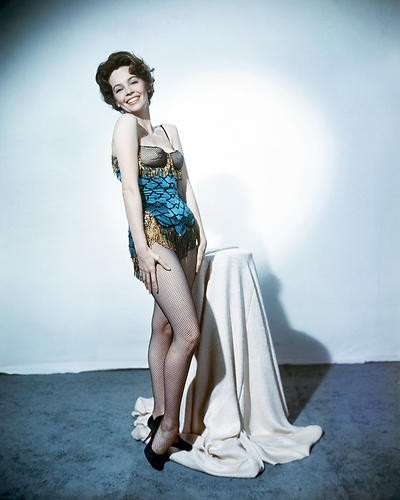

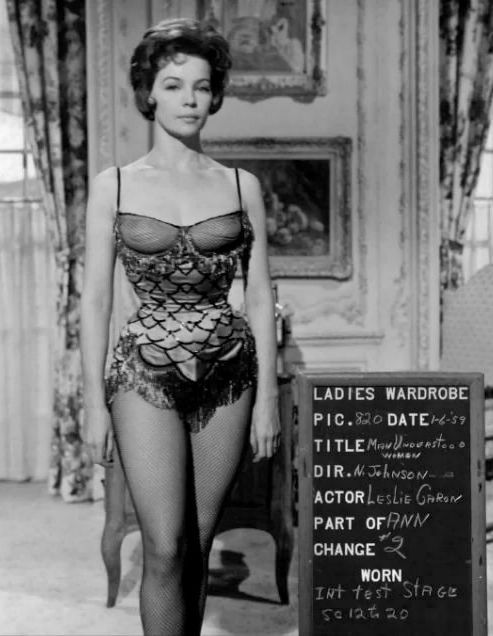



Marilyn Monroe (William Travilla, 1956) - Leslie Caron (Charles LeMaire, 1959)
54 notes
·
View notes
Text
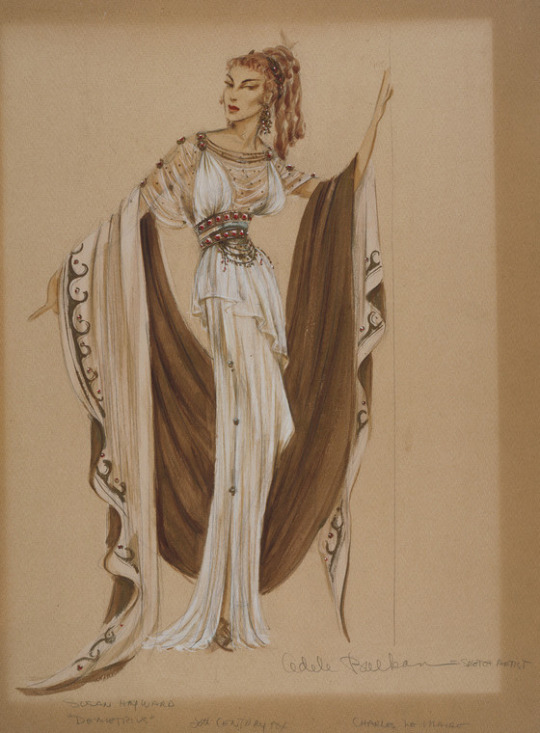
26 notes
·
View notes
Text

Bouquet d'oeillets
Madeleine Lemaire, née Coll (1845-1928, French)
Madeleine was a painter, pastellist and illustrator, who specialized in elegant genre works and flowers. She exhibited her work at the Palace of Fine Arts and The Woman's Building at the 1893 World's Columbian Exposition in Chicago, Illinois. George Painter stated in his book Marcel Proust she is one of the models of Proust's Madame Verdurin (In Search of Lost Time).
Born into the upper middle-class, Madeleine had spent her childhood in the presence of artists. Her aunt, famous miniaturist Mathilde Herbelin (1820-1904), was her first teacher, and Charles Chaplin later became her tutor. Her marriage to municipal civil servant Camille Lemaire in 1870 and subsequent motherhood never prevented her from working tirelessly to perfect her talent. Her relationship with Alexandre Dumas fils cemented her position within the artistic elites and marked her emancipation and her move towards a more personal output.
#dianthus#carnation#painting#still life#flowers#flower vase#women in art#woman painter#french art#Madeleine Lemaire
3 notes
·
View notes
Text

Illustrazione botanica di Charles Antoine Lemaire, 1854
39 notes
·
View notes
Text
I assembled my festive prompt fills for the HBO War Barely Coherent Christmas Chaos daily prompt challenge.
Word Count: 21,859
Fandoms: Band of Brothers, The Pacific
Pairings: Robert Leckie/Bill "Hoosier" Smith, Andrew A. "Ack-Ack" Haldane/Edward "Hillbilly" Jones, Donald Malarkey/Joseph Toye, Joseph Liebgott/Edward Tipper, Vera Keller/Lena Riggi Basilone, Edward "Babe" Heffron/John Julian, Eugene Roe/Ralph Spina, George Luz/Donald Malarkey, Charles Grant/Floyd Talbert, R. V. Burgin/Eugene Sledge, Carwood Lipton/George Luz, Frank Perconte/Denver "Bull" Randleman, Wilbur "Runner" Conley/Robert Leckie, Bill Guarnere/Joseph Toye, Darrell "Shifty" Powers/Donald Hoobler, Joseph Liebgott/Donald Malarkey, Eugene Roe/Richard Winters, George Luz/Ronald Speirs, Anna/Renee LeMaire, David Dobie/Lewis Nixon, Edward "Babe" Heffron/Johnny Martin, George Luz/Eugene Roe, Charles Grant/Ronald Speirs, Wayne "Skinny" Sisk/David Kenyon Webster, Edward "Babe" Heffron/Eugene Roe
10 notes
·
View notes
